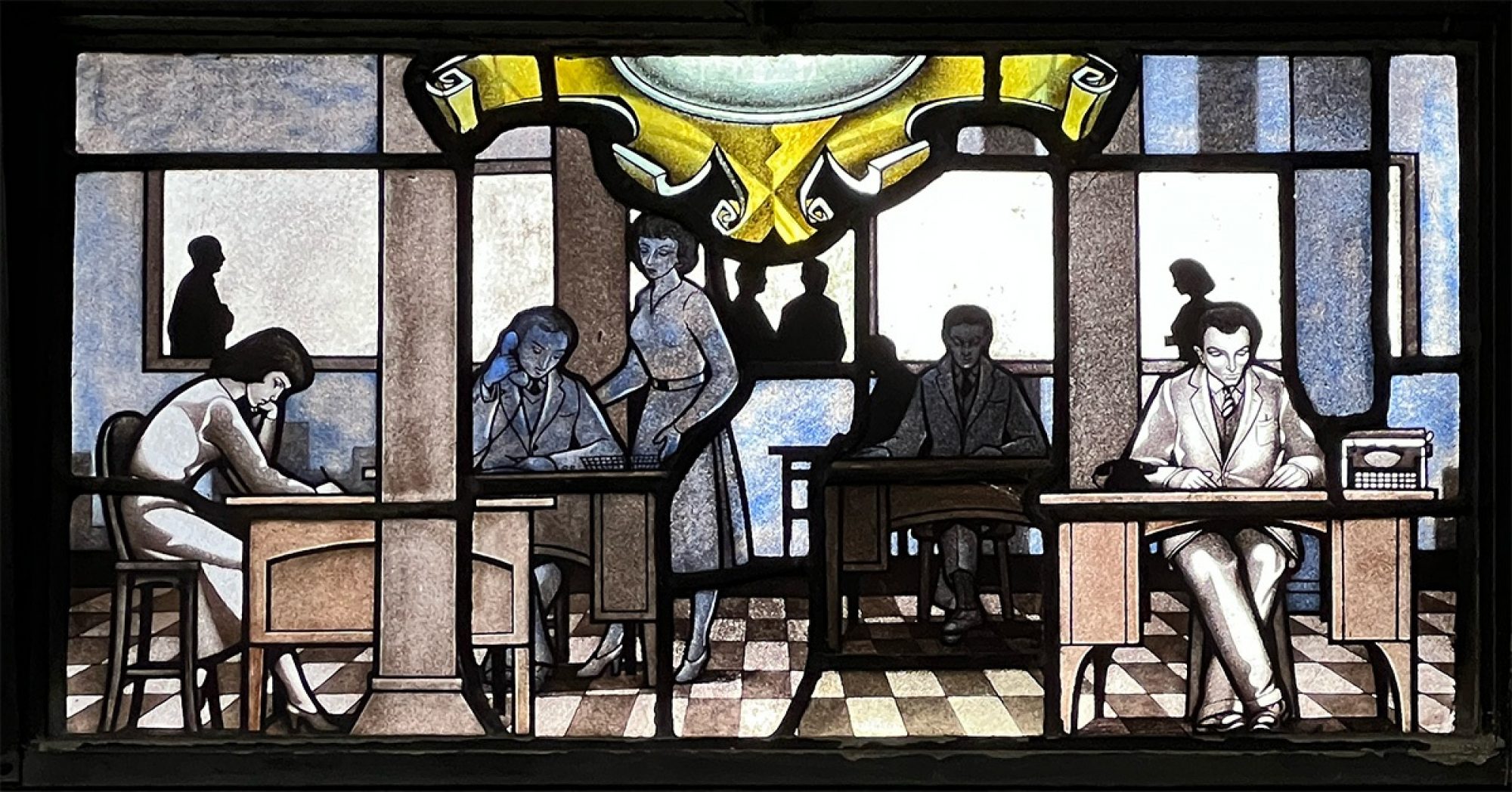
The art of stained glass has adorned Christian churches since the early medieval period. Picture windows illustrated the tenets of the faith, illuminating Bible stories and revered images of saints, apostles and angels. These are the familiar images that come to mind when we hear the words ‘stained glass’. However, just around the corner from Tate Modern near Blackfriars Bridge is a remarkable scheme of 20th-century stained glass windows featuring everyday people and places.
The windows of Christ Church, Southwark depict modern scenes of industry and commerce and make connections between the world of work and the church’s mission and local community. Commissioned in two instalments, the first set of windows in the upper level of the church were installed shortly after the church opened in 1959-60 and are the work of Frederick W. Cole (1908-1998) assisted by Kenneth G. Bunton (d. 2014), both of whom worked for J. Wippell & Co. The second set of windows were installed along the south aisle of the church at ground floor level upon the church’s 25th anniversary in 1984, and were designed by John Lawson (1932-2009), Chief Designer of Goddard & Gibbs, and completed in 1985. Whilst each set has its own style, they complement one another and all feature local trades and businesses, combining figurative everyday scenes with familiar cityscapes and prominent buildings.
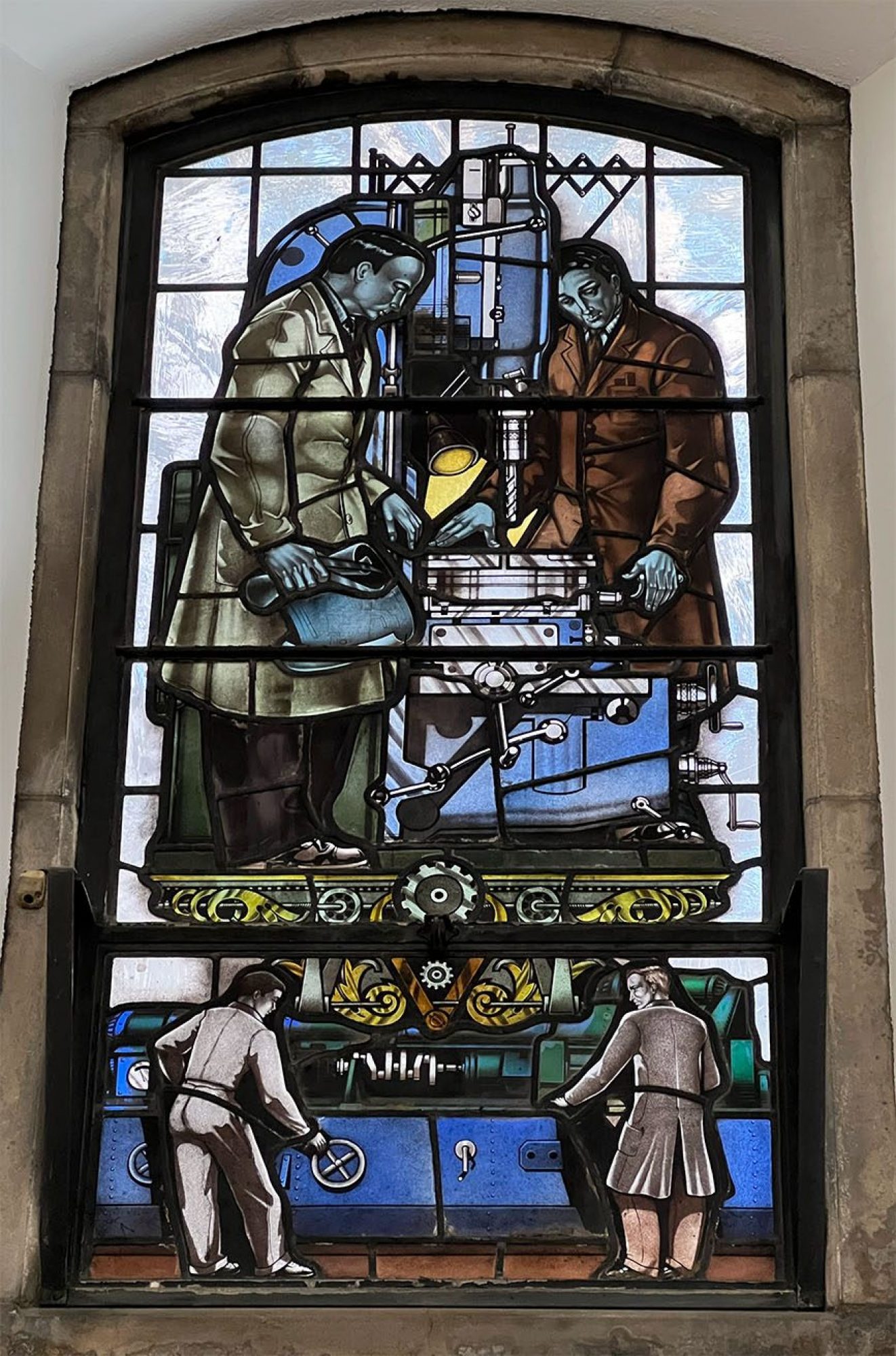
Christ Church’s proximity to the River Thames and the industries that sprung up south of the river is a recurring theme in the stained glass. One window, donated by the congregation in 1984, shows a map of the Diocese of Southwark abutting the river Thames – a dominant flowing blue line – and a representation of the present Christ Church building, the third church on this site, below. This unassuming modern brick church was designed by architects R. Paxton Watson and Barry Costin in 1958-59 to replace an earlier building destroyed in the Second World War. Another window (from the 1959-60 series) is dedicated to the work of Lightermen, whose skill navigating the river’s currents and muscle power enabled passengers and goods to be carried across the river. The artist has captured the energy of the lighterman in action as he draws his paddle up towards his body.
Although the present building dates to the post-war period, the first Christ Church, Southwark, was founded in 1627 with funds bequeathed by local baker John Marshall. Appropriately enough, one of the windows designed by Cole in the nave is dedicated to baking. The top part of the window depicts a baker in 17th century dress by his oven, with a comparative scene set in a modern baking factory below. Several of Cole’s windows connect the church’s 17th century origins to the post-war period in which the church was being built and follow the same format with the upper part representing the figure of a worker, and the lower part showing a scene in a workplace, a local building, or vista.
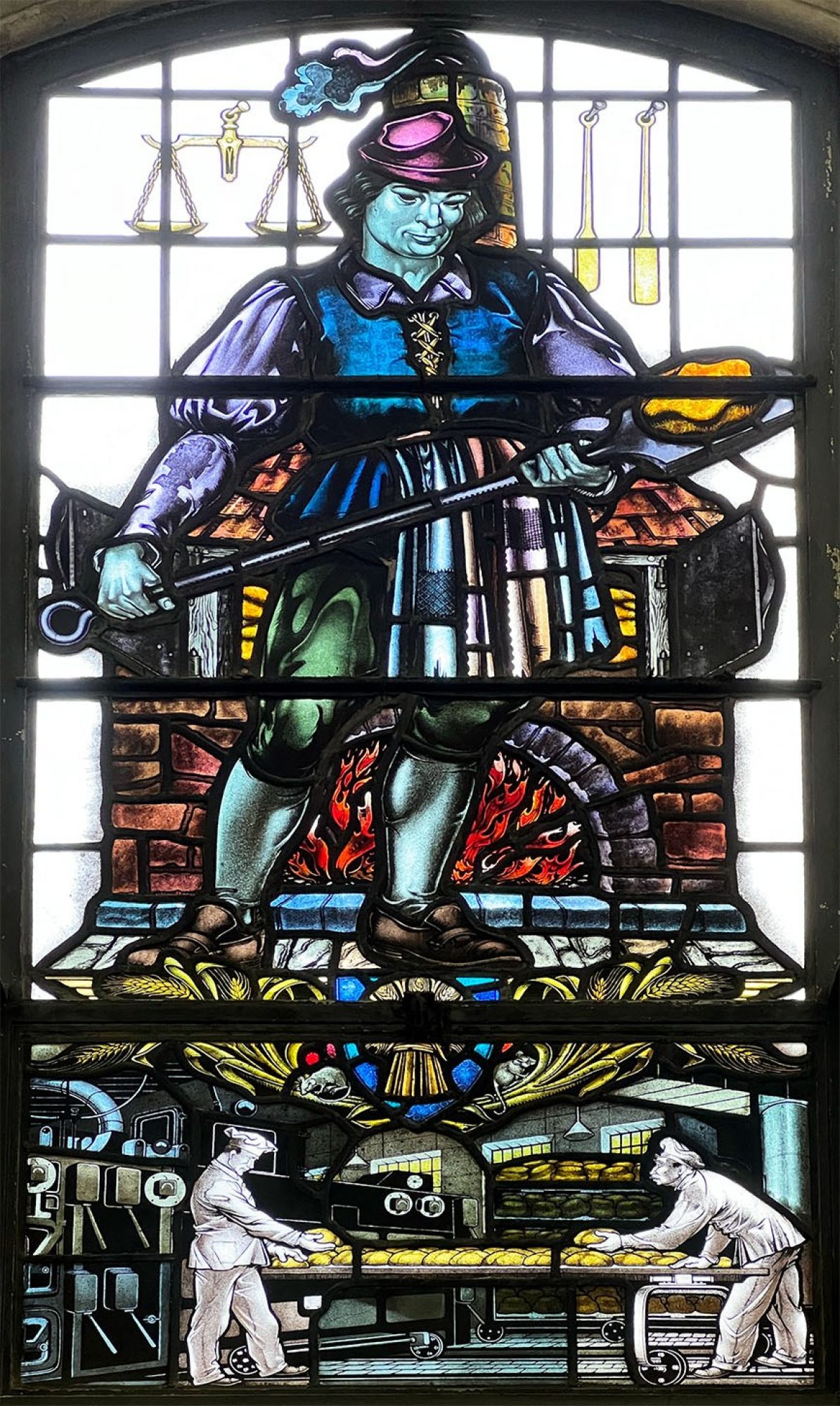
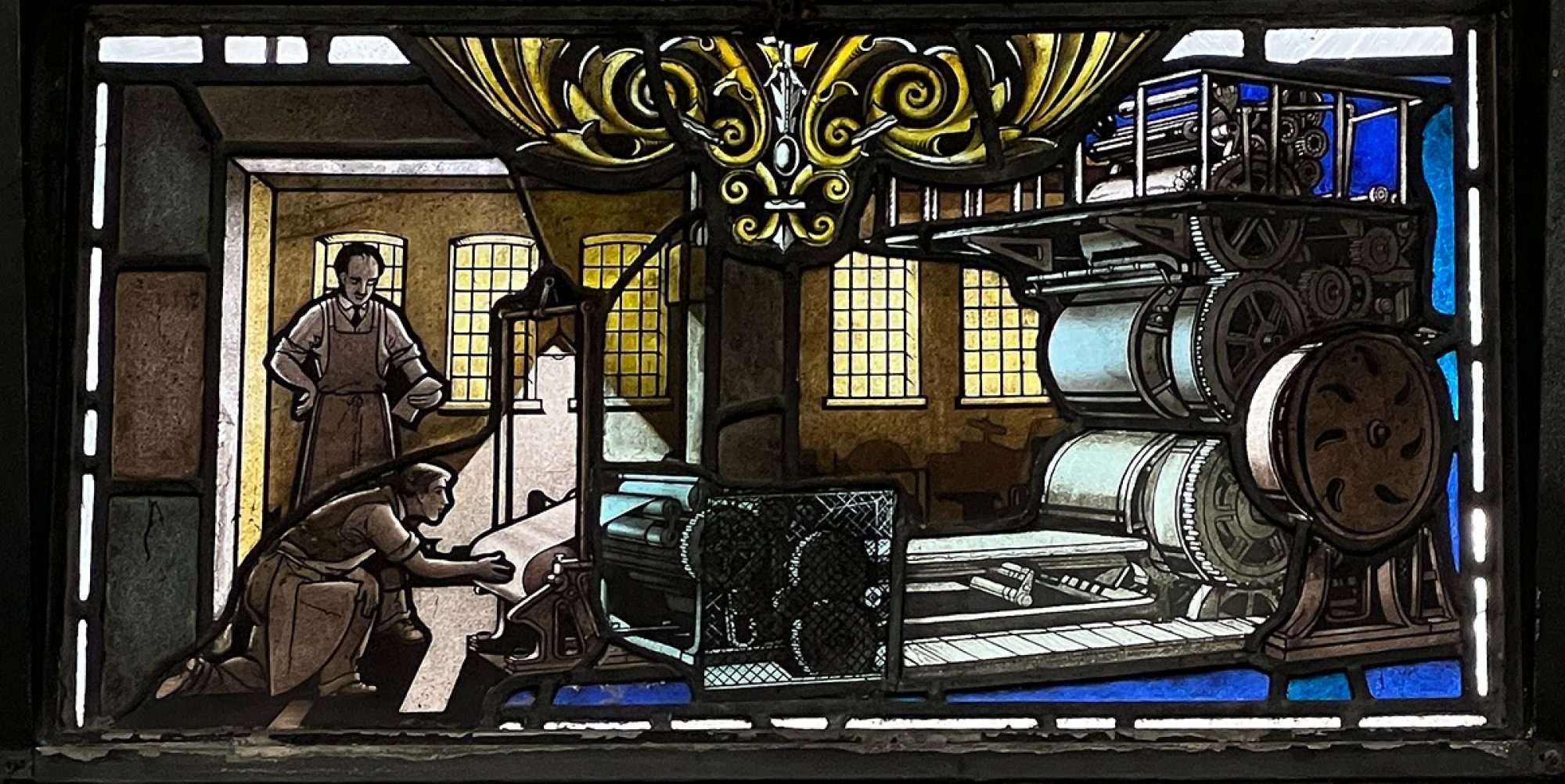
Other key industries which were once prominent along the South Bank are depicted in other windows in this series dedicated to Printing, Construction, Brewing, Engineering and Power Generation. They show muscular figures at work and are notable for their realistic depiction of machines, tools, and local architecture. The Bankside Power Station (now Tate Modern), which once generated electricity, is prominently depicted in the window illustrating Power Generation, with recognisable silhouettes of St Paul’s Cathedral in the vista across the river.

These heavy industries, which were at the time professions dominated by male workers, sit side-by-side with other types of work where women are more visible – including Clerical and Secretarial work, Cleaning, Housekeeping and Childrearing. The workers are notably shown in contemporary post-war clothing; the women cleaning offices wear knotted headscarves and the engineer in the control centre at Bankside Power Station dons heavy brown overalls.
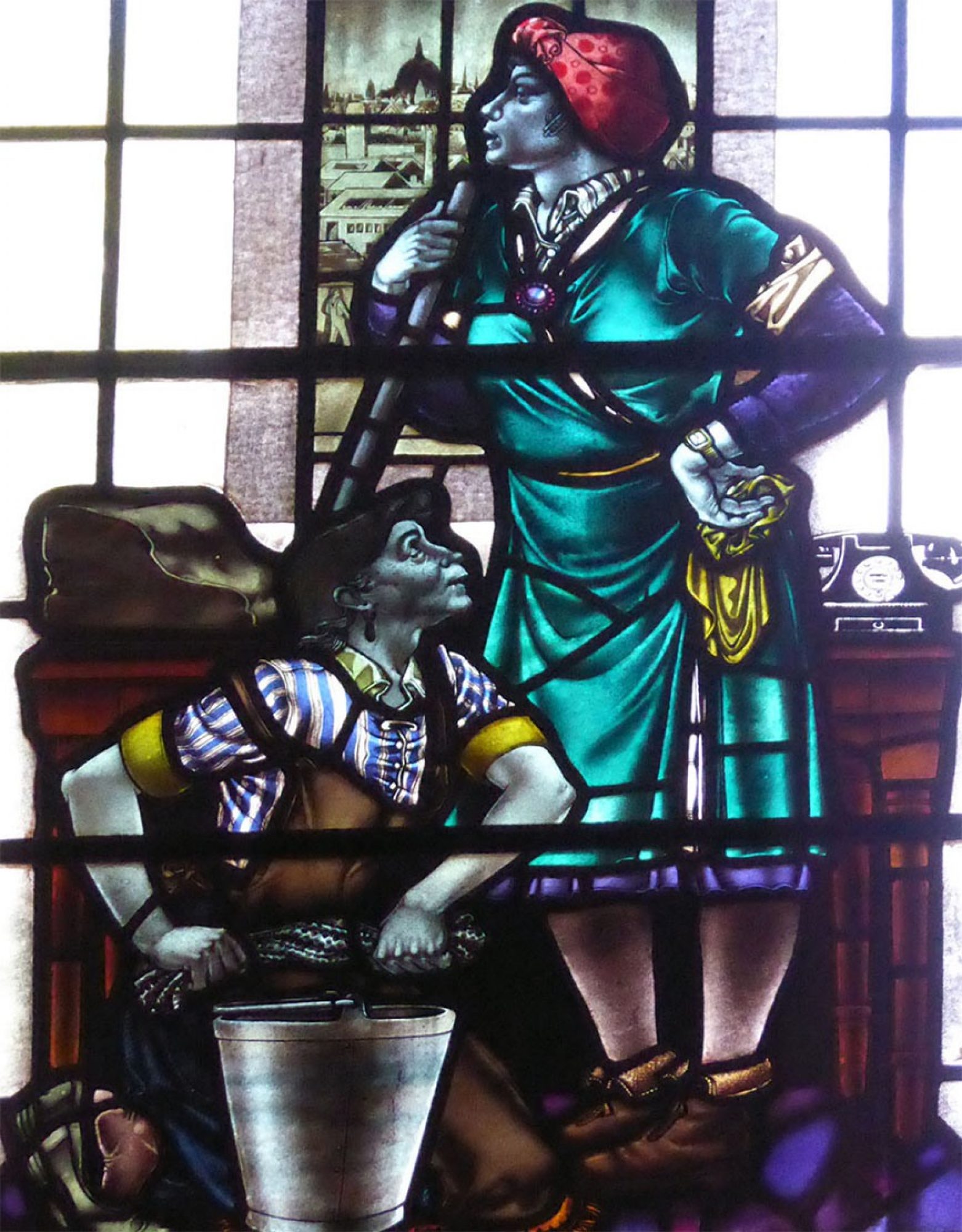
One explanation for the unique imagery in Christ Church’s windows is the church’s connection to The South London Industrial Mission, founded in 1952 and which was based at the church from 1967. Industrial missions like these grew out of the work of chaplains in factories during the Second World War. From Christ Church, chaplains went out to factories, offices, businesses, schools and other institutions in south London, with a mission to bring faith to work.
Whilst Cole’s images of workers are devoid of inscriptions, Lawson’s windows make abundant use of descriptive text, logos and symbols including company logos, reflecting the commercial global economic era of the 1980s. Through its mission and outlook, Christ Church visibly and actively engaged with secular society. Consequently, many local businesses donated money to pay for the windows, and various companies’ headquarters, logos and mottos are featured in the windows. Amongst those represented in the later windows are the former Kirkaldy Testing Machine Works (now Kirkaldy Testing Museum), Sea Containers Ltd (now SeaCo) shipping company and James Adams & Sons, a local family firm that manufactured door springs.
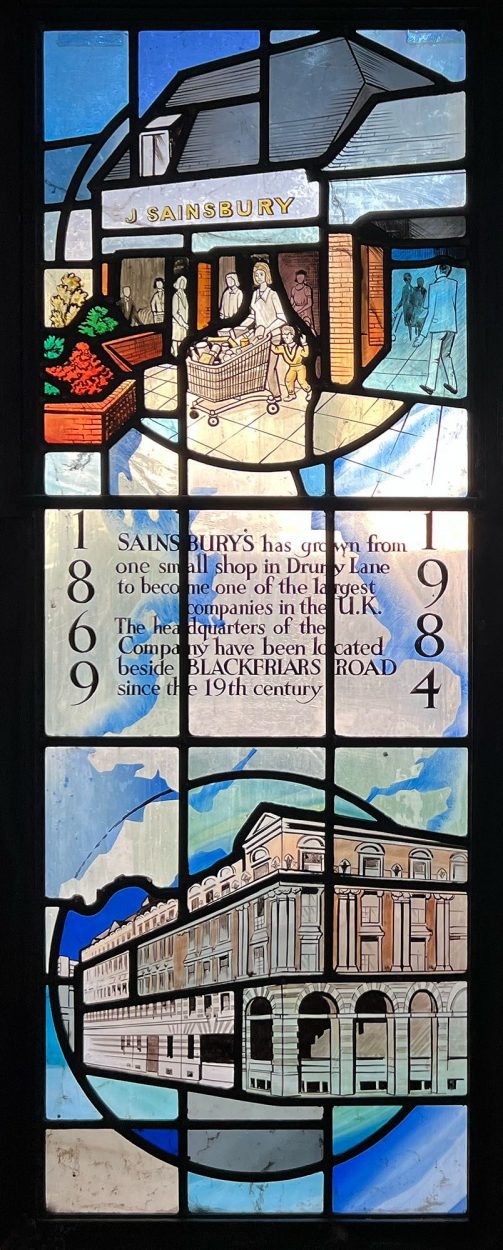
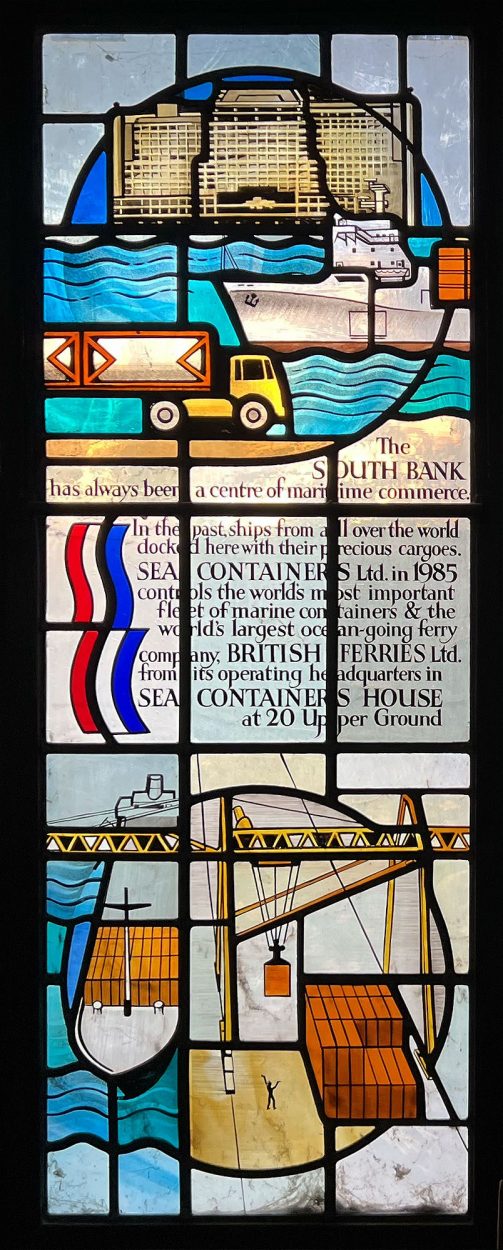
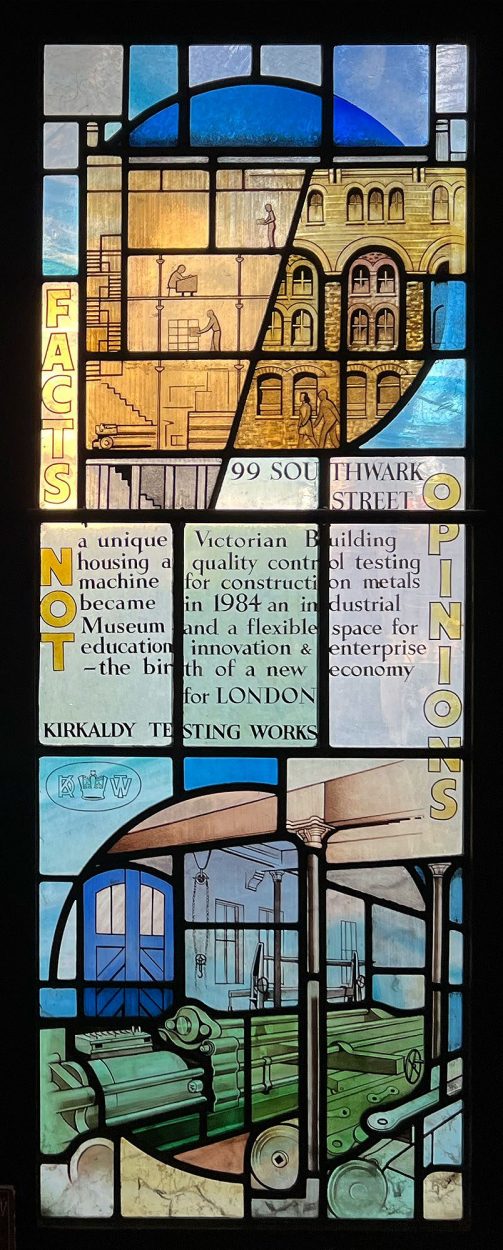
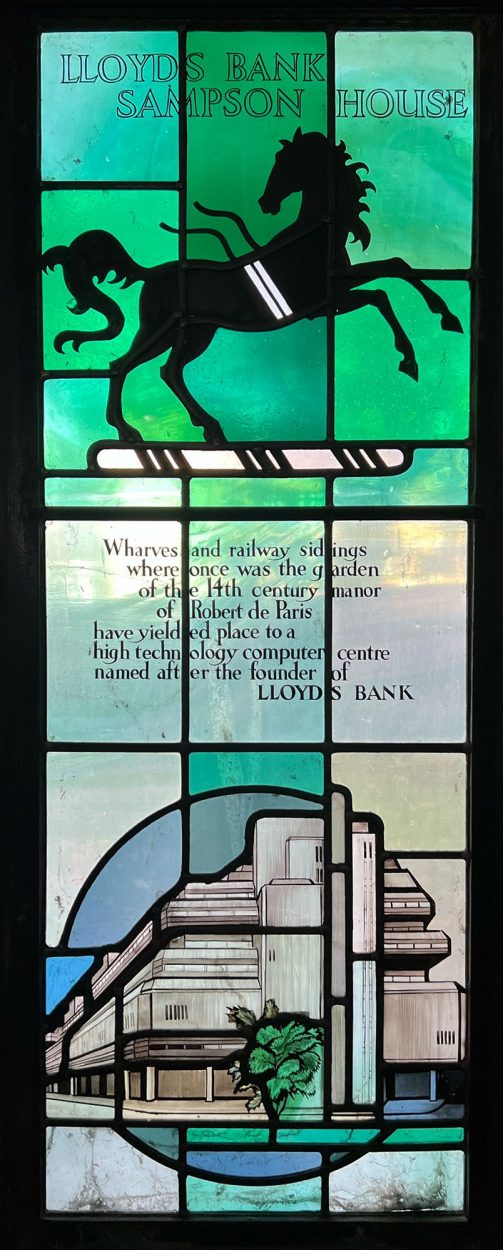
The windows at Christ Church reflect an inclusive and progressive outlook, with workers themselves taking centre stage and the inclusion of trade unions in their own dedicated window with the slogan ‘Unity is Strength’. The same window advocates a strong, just and democratic economy, promoting ‘Rights for the young women, blacks, unemployed, handicapped, low paid, overworked’ workers, and calls on employers’ responsibilities and ‘Duties of wealth creation, education, renewing technology, co-operative productivity, health and safety, developing democracy’. These subjects are balanced by more corporate-looking windows financed by and featuring the former headquarters of J. Sainsbury’s and an image of one of their supermarkets, and Sampson House, the Brutalist building which was built as a data centre for Lloyds Bank. Since both buildings were remarkable examples of modern architecture in the local area and have recently been demolished, it is invaluable that they are documented and illustrated in these windows in a nearby church.
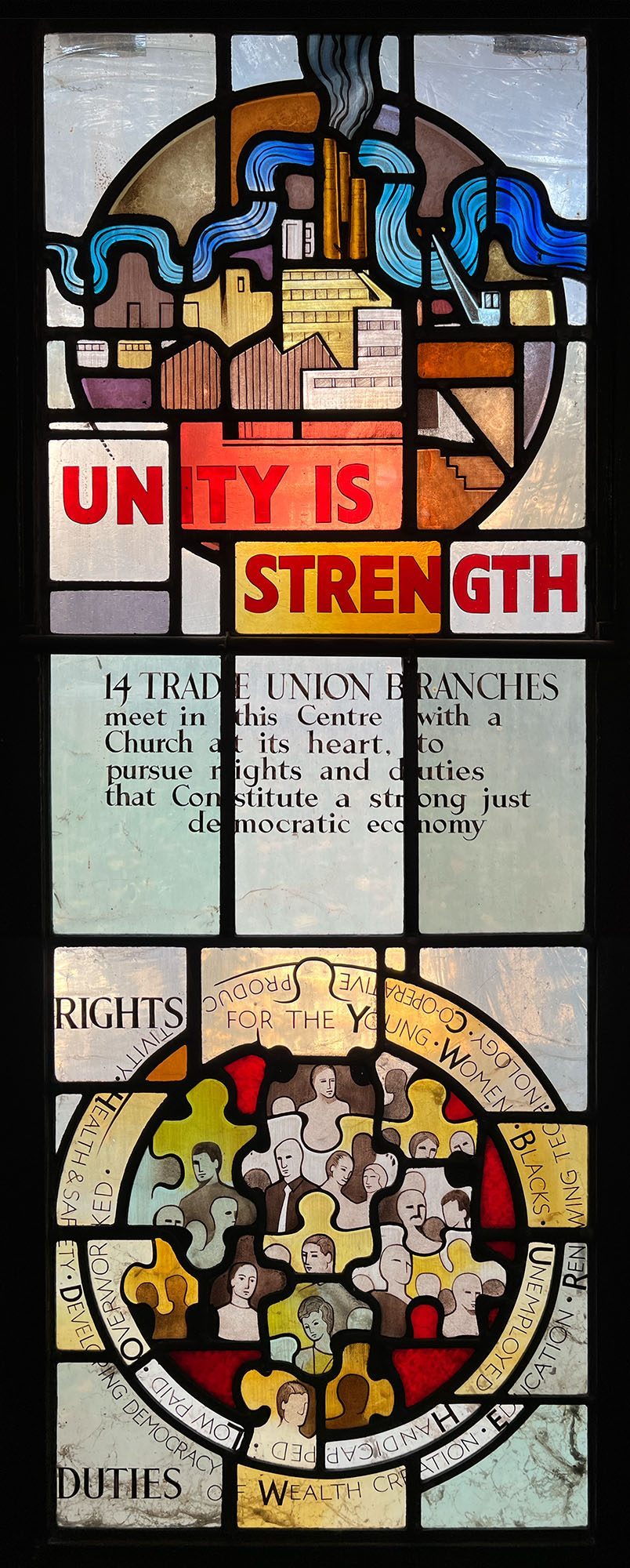
The stained glass of Christ Church provides a window onto a bygone age and evidences a rapidly changing commercial district in which attempts to combine work and faith involved embracing corporate sponsorship as a new act of philanthropy, celebrating economic growth, and encouraging community responsibility. If a further set of windows were commissioned today, they might feature images of the towering glass skyscrapers that have since sprung up around the church, housing digital and software companies, and the numerous hotels and bars that cater for the growing tourism trade along the South Bank. Indeed, the former headquarters of Sea Containers Ltd on the South Bank, represented in a window dedicated to the shipping company, is today a luxury hotel with the same name.
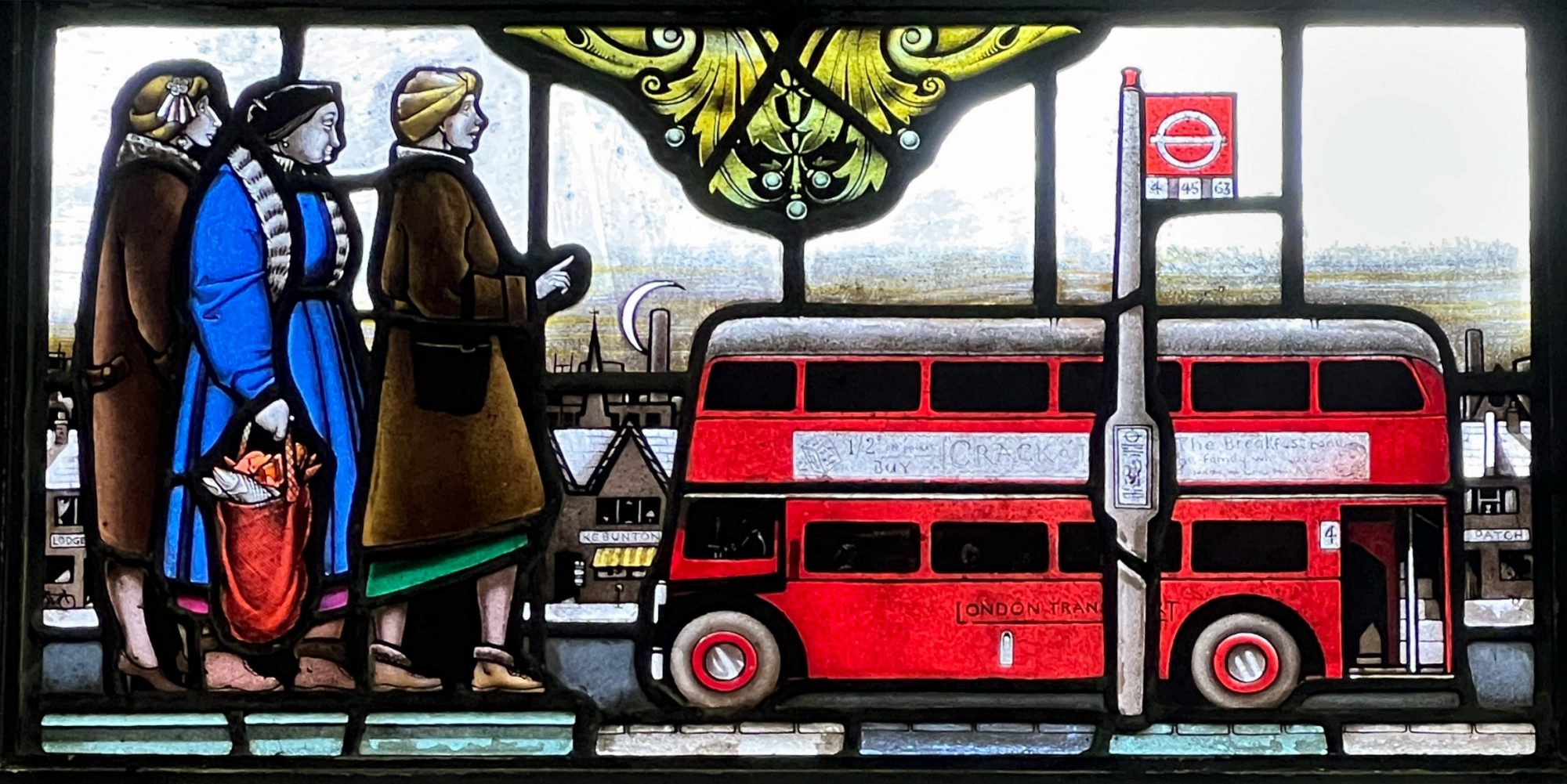
Jasmine Allen took up the role of Curator of The Stained Glass Museum in February 2013. The Stained Glass Museum is an independent museum with a specialist collection of stained glass spanning the 13th to the 21st centuries, from across the UK and Europe. Jasmine was awarded her PhD from the University of York in 2013, where she studied Art History and specialised in the art of stained glass. She has published widely on stained glass in the modern period, and regularly gives public talks and tours on the history of stained glass.




